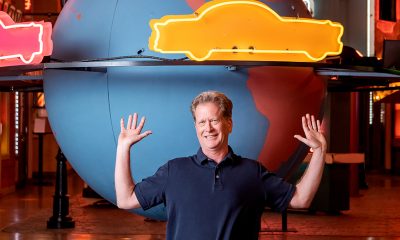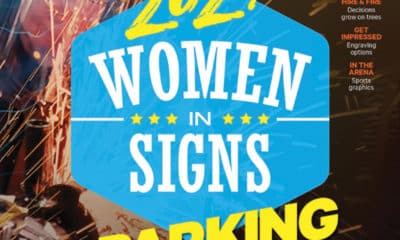In the cutthroat world of athletic footwear and apparel, purveyors must investigate all possible angles to glean a competitive edge. ASICS, reportedly the world’s third-largest shoe company, sought to enliven its new Sydney, Australia office to inspire its staff to think of creative ways to surpass competitors. WMK Architecture (Sydney) developed the new facility, which provides an open floor plan with ample opportunities for graphic treatment, and There Design, also of Sydney, which specializes in corporate interiors, developed the kinetic EGD campaign that pays homage to man in motion.
Wizardry Sign & Imaging, a 20-year-old shop also based in Sydney, won the bid to fabricate the signage. Bryan Martin, the company’s president, said, “We pioneered digital printing in Australia and have continually evolved our production facility. Now, we manufacture almost all of our own components internally.”
As is too often the case, the sign fabricator was one of the last trades enlisted in the facility’s completion; Martin estimates Wizardry’s staff was only onsite for approximately two weeks. However, the shop made the most of its time by value-engineering the project, which included such changes as simplifying installation and substituting LEDs for neon and fluorescents for illuminated components.
Wizardry executed the inkjet-printed elements with synthetic-canvas media on the shop’s NUR Revolution UV-curable-ink printer. Martin said, once the walls were painted or cleaned (depending on where the graphics were installed), the material and ink combinations were so “bulletproof” that removing graffiti vandalism would only require a soap-and-water wash. Installers secured the prints with a proprietary, VOC-free adhesive Wizardry produced in-house that replaced the need for hardware.
The project also included a series of lightboxes with acrylic faces encased within Wizardry’s custom fascia. White LED modules provide the accent lighting. The faces were decorated with a PVC skin that’s printed on the Revolution. According to Martin, hidden hardware within the fascia allowed for graphic changeouts while being invisible to the viewer.
The project’s channel letters were fabricated with .080-in., aluminum returns with faces CNC router-cut from opal polycarbonate, an opaque variety commonly used for greenhouse roofs, and painted with two-part, automotive-finish coatings.
Advertisement



 Projects1 week ago
Projects1 week ago
 News2 weeks ago
News2 weeks ago
 How To1 week ago
How To1 week ago
 Real Deal3 days ago
Real Deal3 days ago
 Editor's Note4 days ago
Editor's Note4 days ago
 News3 days ago
News3 days ago
 News1 week ago
News1 week ago
 Product Buying + Technology5 days ago
Product Buying + Technology5 days ago







